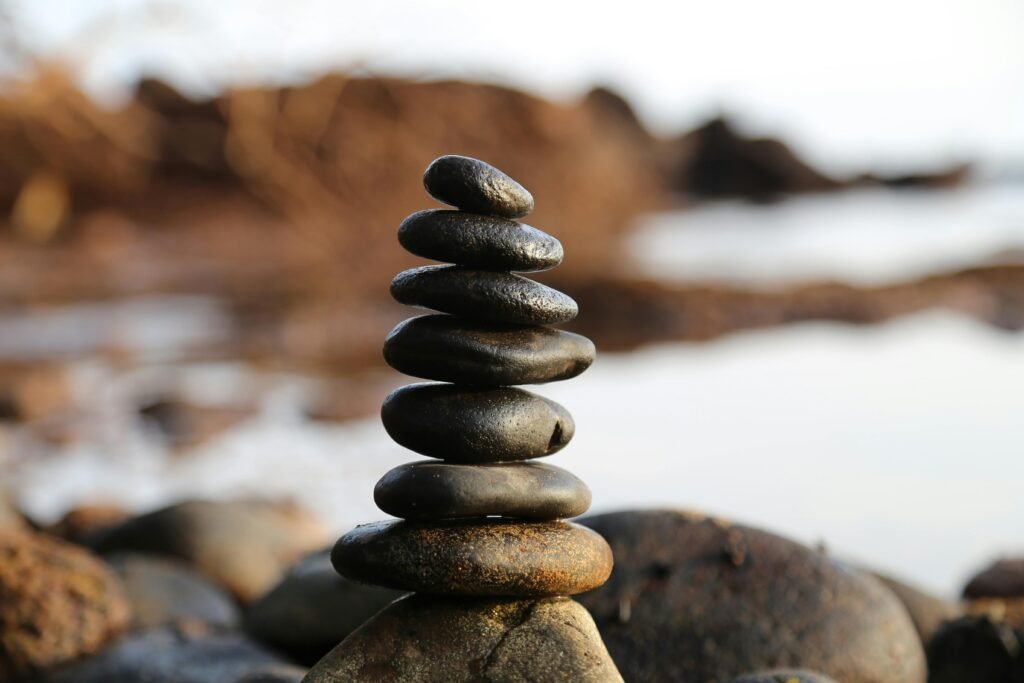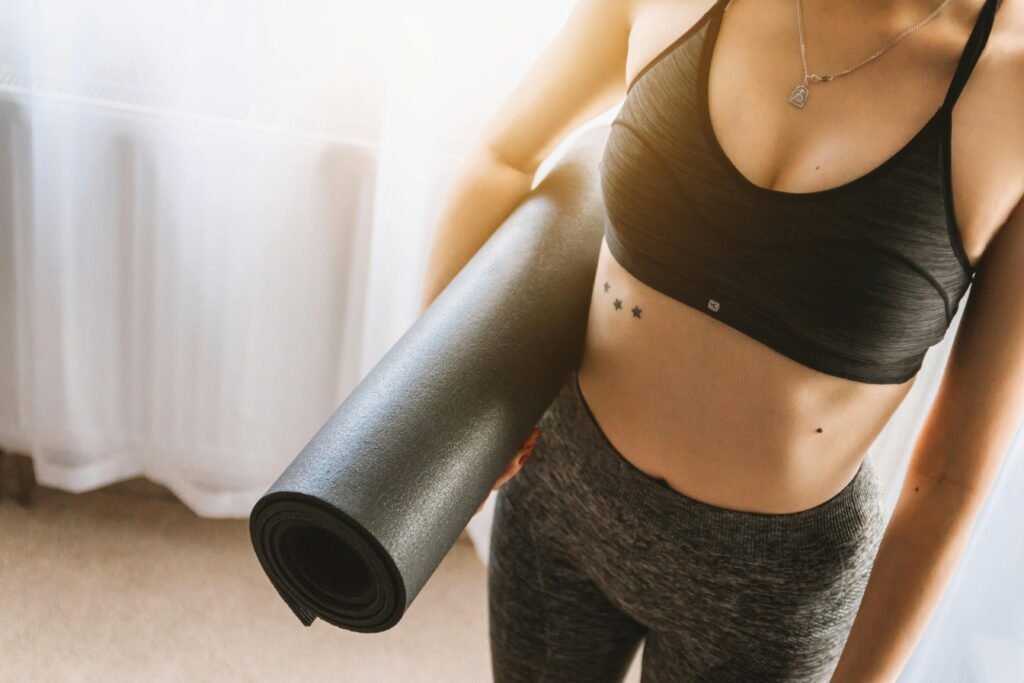
Introduction to Meditation
In today’s fast-paced environment, finding moments of peace can seem like an elusive goal.
However, meditation offers a practical solution to bring calm into your life.
This practice, rooted in ancient traditions, has stood the test of time and for good reason.
It empowers you to quiet your mind, focus your thoughts, and find a sense of tranquility amidst the chaos.
Starting with meditation doesn’t require any special equipment or complicated rituals.
All you need is a willingness to try.
Whether you choose to sit in a chair, lie down, or adopt a classic lotus position, what matters most is your comfort.
Meditation is highly personal, and your approach should reflect what feels right for you.
At its core, meditation is about focus and awareness.
When you meditate, you turn your attention inward, exploring the depths of your consciousness.
This inward focus helps you detach from external stressors and fosters a more mindful presence in your daily activities.
By dedicating even a few minutes each day to this practice, you can begin to notice positive changes in how you handle stress and interact with others.
One of the beautiful aspects of meditation is its accessibility.
You don’t need to be a monk or a yogi to benefit from it.
Everyone, regardless of age or lifestyle, can experience the alterable effects of meditation.
The journey begins with understanding your motivations and setting realistic expectations for yourself.
Maybe you’re looking to reduce anxiety, improve your sleep, or simply carve out a moment of peace in a busy day.
Whatever your goals, meditation can help you achieve them.
It’s normal to encounter challenges along the way.
Your mind may wander, or you might struggle to find the time to meditate consistently.
Remember, this is a journey, not a sprint. Each session is a step toward greater self-awareness and peace.
By staying committed and patient, you pave the way for a more serene and balanced life.
Defining Your Intentions

Setting clear intentions for your meditation practice can be a game-changer.
Knowing why you’re meditating gives your sessions purpose and direction, which is crucial for staying motivated.
Maybe you’re looking to reduce stress, sharpen your focus, or even cultivate a sense of gratitude.
Whatever your reasons, defining them can make each session more meaningful and effective.
Think of your intentions as your North Star. They guide you and keep you anchored, especially on days when your mind feels scattered.
For example, if your goal is to reduce stress, you might focus on breathing techniques that help calm your nervous system.
If improving concentration is your aim, practices that enhance your focus, like mantra meditation, can be particularly beneficial.
Don’t hesitate to write down your intentions.
A physical reminder can be incredibly motivating.
Place your written goals somewhere you’ll see them daily, like your meditation space or even your bathroom mirror.
This constant visual cue can help reinforce your commitment and keep you on track.
Your intentions can also evolve over time.
What starts as a quest for better sleep might grow into a broader desire for overall well-being.
Be open to this growth and allow your practice to adapt to your changing needs.
Flexibility in your approach can make your meditation journey more enriching and sustainable.
Additionally, sharing your intentions with a trusted friend or meditation group can provide extra support.
Knowing that someone else understands your goals can be a powerful motivator and can add a sense of accountability to your practice.
You might even find that discussing your experiences with others offers new insights and perspectives.
Remember, the power of intention lies not just in setting it, but in revisiting it regularly.
Make it a habit to check in with yourself and assess how your meditation practice aligns with your goals.
This ongoing reflection can deepen your self-awareness and enhance the overall impact of your meditation journey.
Creating Your Meditation Space

Creating a meditation space that feels welcoming and tranquil can significantly enhance your practice.
Start by choosing a spot where you feel at ease and are less likely to be interrupted.
This could be a dedicated room, a corner in your living space, or even an outdoor area like a garden or balcony.
The key is to create an environment where you can focus and relax.
Consider the elements that make a space calming for you.
Soft lighting can create a soothing atmosphere, so think about using dimmable lamps or candles.
Comfortable seating is essential—whether it’s a cushion, chair, or yoga mat, ensure that you can sit or lie comfortably for the duration of your session.
Adding a blanket can also provide extra coziness.
Incorporating sensory elements can deepen your meditation experience.
Aromatherapy, for example, can be a powerful addition.
Scents like lavender, sandalwood, or eucalyptus can help you relax and focus.
You might use essential oils, incense, or scented candles to introduce these calming aromas into your space.
Don’t overlook the power of sound.
A quiet environment is crucial, but sometimes a little background noise can enhance the experience.
Consider playing soft instrumental music, nature sounds, or even guided meditation tracks to help you stay focused.
Noise-canceling headphones can also be beneficial if you’re in a noisy environment.
Personalize your space with meaningful items.
This could be anything from inspirational quotes and photos to plants and crystals.
These elements can serve as visual reminders of your intentions and add a touch of individuality to your meditation corner.
Keeping your space clean and clutter-free is equally important.
A tidy environment can contribute to a clear mind, so make an effort to organize your area before each session.
This small act of preparation can signal to your mind that it’s time to focus and relax.
Lastly, make your meditation space easily accessible.
The easier it is to get to your spot, the more likely you are to use it regularly.
By creating a space that invites you to sit down and meditate, you’re setting yourself up for a successful and consistent practice.
Exploring Breathing Techniques

Breathing is a powerful tool in your meditation toolkit, and mastering it can elevate your practice to new heights.
One effective technique is deep breathing, where you inhale slowly and deeply through your nose, allowing your diaphragm to expand and fill your lungs completely.
This method helps slow your heart rate and calms your nervous system, making it easier to settle into a meditative state.
Another popular technique is the 4-7-8 method. In this exercise, you inhale for four seconds, hold your breath for seven seconds, and then exhale slowly for eight seconds.
This pattern not only helps in grounding your mind but also enhances your body’s relaxation response.
With practice, you might find it particularly helpful during moments of high stress or when you’re having trouble sleeping.
Box breathing is another excellent method, often used by athletes and Navy SEALs to stay calm and focused under pressure.
To practice box breathing, inhale for a count of four, hold your breath for four counts, exhale for four counts, and then hold your breath again for another four counts.
Repeat this cycle for a few minutes, and you’ll likely notice a significant improvement in your concentration and emotional control.
Alternate nostril breathing can also add a new dimension to your meditation practice.
This technique involves closing one nostril and inhaling through the other, then switching nostrils to exhale.
The rhythmic nature of this practice can help balance the mind and body, making it an effective way to enhance your overall well-being.
For a more dynamic approach, try the breath of fire, often used in Kundalini yoga.
This technique involves short, powerful exhales through the nose, accompanied by passive inhales.
It’s invigorating and can help increase your energy levels and mental clarity.
Don’t underestimate the impact of simple, mindful breathing.
Even just taking a few moments to focus on your breath, observing the sensation of air entering and leaving your nostrils, can make a profound difference.
Use these techniques as tools to deepen your meditation practice and find what resonates best with you.
Incorporating Mindfulness

Incorporating mindfulness into your daily meditation practice can amplify its effects.
Mindfulness is about being present in the moment and paying attention to your thoughts and sensations without judgment.
Research supports its efficacy, showing that mindfulness-based approaches are effective in reducing anxiety and depression, performing comparably to cognitive behavioral therapy and antidepressants.
One way to introduce mindfulness is through body scans.
Start at the top of your head and slowly work your way down to your toes, noting any tension or discomfort along the way.
This practice helps you connect with your physical self and brings awareness to areas you might otherwise ignore.
Another method is mindful eating.
Next time you have a meal, take the time to savor each bite.
Notice the texture, the taste, and even the aroma of your food.
This simple exercise can transform a mundane activity into a rich sensory experience, grounding you in the present moment.
Mindful walking is another excellent technique.
Instead of rushing to your next destination, take a few minutes to walk slowly and notice the sensation of your feet hitting the ground.
Pay attention to your surroundings—the colors, the sounds, the smells.
This practice can be a refreshing way to break up your day and bring your focus back to the now.
Breath awareness is also a cornerstone of mindfulness.
Spend a few moments focusing solely on your breath.
Observe the rise and fall of your chest, the feeling of air entering and leaving your nostrils.
If your mind starts to wander, gently guide it back to your breath.
This simple act can anchor you and make you more present.
Journaling can further enhance your mindfulness practice.
Spend a few minutes each day writing down your thoughts, feelings, and observations.
This reflection can provide insights into your mental state and help you understand patterns in your thinking and behavior.
Incorporating these techniques into your routine can deepen your meditation practice and enhance your overall well-being.
Building Consistency and Routine

Consistency is your secret weapon for mastering meditation.
Just like any other skill, the more you practice, the better you get.
The trick is to make meditation a seamless part of your daily routine.
Find a specific time and place where you can meditate without interruptions.
Whether it’s first thing in the morning, during a lunch break, or right before bed, having a set schedule can make a world of difference.
Think of your meditation practice like brushing your teeth—it’s something you just do, no questions asked.
Start with just a few minutes a day if you’re new to it.
Gradually, you can increase the duration as you get more comfortable.
Even short sessions can offer immense benefits, and consistency will help you build a strong foundation.
Creating a routine isn’t just about the “when” and “where”—it’s also about the “how.”
Maybe you start with a quick breathing exercise or a favorite guided meditation.
The key is to have a go-to plan that you can easily follow, especially on those days when motivation is low.
Accountability can be a game-changer. Share your meditation goals with a friend or join a meditation group.
Knowing that others are on this journey with you can provide that extra push to stick with it.
You can even set reminders on your phone or leave a note in your meditation space to keep you on track.
It’s normal to face days when you just don’t feel like meditating.
On such days, remind yourself of your intentions and the reasons you started.
Push through the resistance, even if it’s just for a brief session.
Over time, this discipline will become second nature, and you’ll find that missing a session feels like something’s off.
Incorporate small rituals to make your practice more enjoyable.
Maybe it’s lighting a candle, playing soft music, or sipping a cup of herbal tea beforehand.
These little touches can make your meditation time something you look forward to.
Navigating Challenges

Challenges are a natural part of any new endeavor, and meditation is no exception.
It’s common to face distractions, restlessness, or even frustration as you begin your practice.
The key is to approach these challenges with patience and persistence.
When distractions arise, acknowledge them without judgment and gently guide your focus back to your breath or mantra.
This simple redirection can help you build mental resilience over time.
Frustration often comes from the expectation of immediate results.
Understand that meditation is a skill developed through consistent practice.
Instead of getting discouraged, view each session as an opportunity to learn more about your mind and how it reacts.
This perspective shift can turn potential setbacks into valuable learning experiences.
Some people experience negative effects from meditation, similar to the rate reported for other psychological therapies, with about 8 percent of practitioners encountering such effects.
as about 8 percent of practitioners encounter such effects.
If you find meditation unsettling, consider starting with shorter sessions and gradually increasing the duration as you become more comfortable.
Distractions are inevitable, especially in our modern, tech-driven world.
Create a meditation space that minimizes these interruptions.
Turn off notifications, inform those around you of your quiet time, and use tools like noise-canceling headphones if necessary.
These small steps can significantly enhance your focus.
If your mind wanders, which it likely will, don’t be too hard on yourself.
Gently bring your attention back to your point of focus, whether it’s your breath, a mantra, or a guided meditation.
This act of returning to the present moment is a core aspect of meditation and helps build your concentration over time.
Lastly, seek community support if needed.
Joining a meditation group or finding a meditation buddy can provide encouragement and accountability.
Sharing your experiences with others can offer new insights and make the journey feel less solitary.
Advantages of Meditation

Meditation offers a wealth of benefits that extend far beyond the meditation cushion.
Research has shown that regular meditation can lead to a notable reduction in blood pressure, especially in individuals managing conditions like hypertension and diabetes according to a 2020 review of 14 studies.
It’s not just about your heart, though—meditation also plays a significant role in pain management.
Studies have demonstrated that meditation practices are strongly tied to reduced pain, even in adults using opioids where meditation practices were strongly tied to reduced pain.
This makes it a powerful tool for anyone dealing with chronic discomfort.
Sleep is another area where meditation truly shines.
For many people, a good night’s sleep can feel elusive, but incorporating meditation into your routine can change that.
It has been shown to improve sleep quality, offering more benefits than educational treatments alone as noted in a 2019 analysis of 18 studies.
This means fewer restless nights and more rejuvenating rest, helping you wake up refreshed and ready to tackle the day.
Beyond these physical benefits, meditation also fosters emotional resilience.
It helps you develop a more mindful approach to life’s challenges, making it easier to manage stress and maintain a positive outlook.
By integrating meditation into your daily routine, you’re not only nurturing your mind but also promoting overall well-being.
This practice is a journey toward a more balanced and serene existence, and the rewards are well worth the effort.
